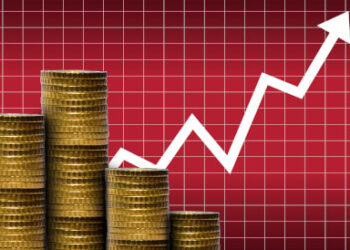Never a week goes by without another reason for investors to worry about their growth investments. The challenge for advisers is to manage these objections so clients stay invested as the vast majority of Australians need the long-term return of a growth fund if they are to fund their preferred lifestyle.
The latest fear is the United States is about to fall off an economic cliff, sending its share market into a downward spiral. While I don’t have a crystal ball, there are some reasons why it is not all doom and gloom.
The best place to start is early this decade. In the period after the tech boom, the US had a lot of stimulus thrown at it to ensure consumer spending remained strong as the share market corrected. This stimulus was in the form of low interest rates and large fiscal deficits to fire up the economy. A few years on, and the US is now transitioning to a more normal environment.
The reasons why some investors are worried about the US are quite varied. Economic growth is slower than expected. Then there is the huge current account deficit some believe will send the US dollar plummeting in value. You have a deflating housing bubble that may impact on consumer spending as households feel less wealthy. Plus the share market is at a record level, which has the nervous nellies seeing only one way to go and that’s down.
Let’s look at US economic growth first. Yes it is a little softer than expected, but still pretty solid at a forecast rate of 2.9 per cent for 2007. This is a higher growth rate than Australia. In fact, the Australian cycle is a bit ahead of the US. We had the tightening of rates a few years ago to take the heat off the housing sector. Australia has so far experienced a relatively stable unwinding of the housing bubble. The US to date has had a similar experience with house prices coming off but not collapsing.
Inflation remains a concern of the US Federal Reserve. However, recent falls in the oil price take some of the heat off. Rates may well be close to the top of the tightening cycle. Importantly, the Fed has moved rates of 1 per cent back to 5.25 per cent. They now have scope to restimulate if needed. At 1 per cent there was nowhere to go. When it comes to the share market, ipac has been positive about the potential for the US to do better this year.
The reason the US lagged markets like ours in recent years was simply that it did not have the same exposure to resources. The US has around 10 per cent in energy and materials, whereas Australia has 30 per cent in the energy and materials sectors. In the past few months, the US has been one of the better performers particularly as commodity prices weakened.
The Dow has hit new highs while the S&P 500 has risen strongly, although it is still well below its record levels. Reasons for optimism about the future are that even after record company profits the valuations of US companies are at the lowest level for more than a decade while return on equity is running above average. All this means the market can absorb the loss of a few tailwinds. At the same time, those who fear the US current account deficit is unsustainable and will lead to the collapse of the US dollar may be jumping at shadows.
What matters, says leading US economist David Hale, is not the ratio of the current account deficit to GDP but its size in comparison to asset markets. The current account deficit is worth only 1 per cent of the value of US assets. It does not present any serious funding problems for American financial markets. The US is still importing $60-80 billion a month, primarily from private sector investors.
Hale makes the point that US asset markets have been expanding at an annual rate of 8-9 per cent, so there is unlikely to be any future shortage of securities for foreign capital flows. For Hale the big risk for the US dollar is the American economy could experience a major slowdown during the next 12 months that would dampen returns in American asset markets. There is also the risk the housing bubble deflates faster than expected. The bottom line, says Hale, is that the world economy needs a large US current account deficit to sustain moderate growth in the US economy.
When I talk to clients about the potential for the US, I simply ask the question ‘if you had $1 billion to invest, where would you go’? You would want a market with the depth of opportunity, the transparency of reporting and the individual freedoms essential to grow wealth.
The US is a country of companies, many of whom are leaders in the industries of the future like information technology, material science and biotechnology. There is no doubt that if you had to find a home for $1 billion a large slice of it would end up in US asset markets. That’s why it continues to makes sense for Australian investors to have a large proportion of their international exposure in the US.
If they do then they will be in good company. In his latest shareholders address, Warren Buffet says: “Overall, I’m an enormous bull on the country. This is the most remarkable success story in the history of the world. It does not make sense to bet against America. I do not get pessimistic about the country.”







